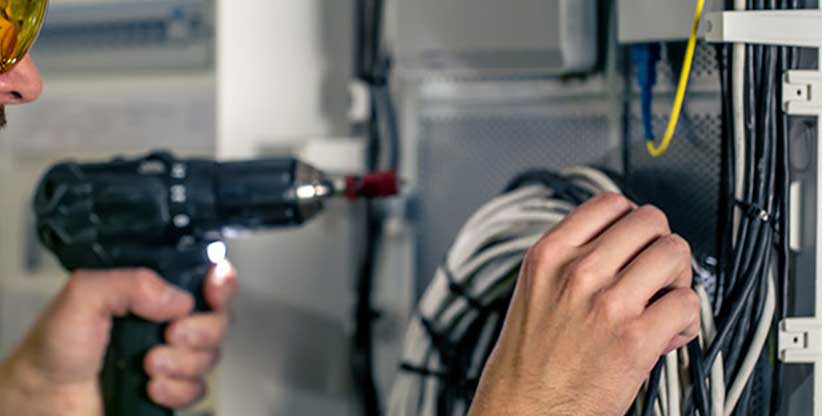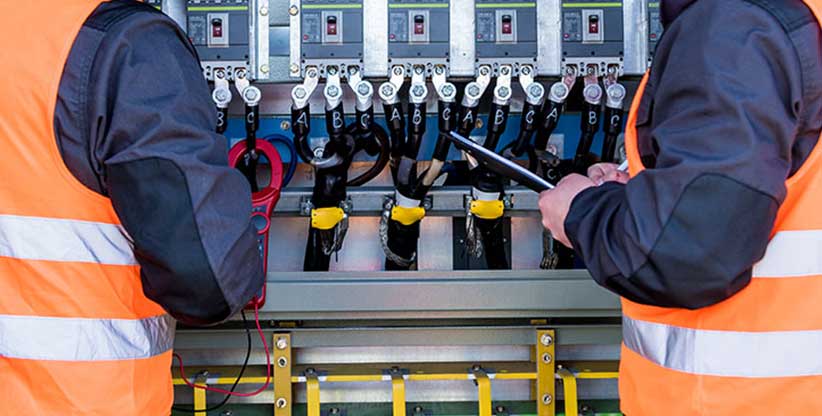Running a commercial building isn’t cheap, especially when the electric bill keeps creeping up. Whether you manage an office, retail floor, or warehouse, you’re probably wondering how to keep tenants comfortable without wasting a single kilowatt-hour.
Here’s the fast answer:
- Start with an energy audit.
- Swap old lights for LEDs and add occupancy sensors.
- Tune up the HVAC and install smart thermostats.
- Control plug loads with advanced power strips.
- Track usage in real time and act on the data.
In this blog, we’ll dig into each step, sprinkle in quick tips, highlight pitfalls to avoid, and show how you can meet efficiency goals without disrupting daily operations.
Understand Where the Energy Goes
Before buying new gear, find out where the watts are leaking. An energy audit (professional or in-house) maps out lighting, HVAC, plug loads, and the building envelope.
Info: Free audit calculators are available from the U.S. Department of Energy and many local utility websites. Bring last year’s bills for the most accurate snapshot.
Quick Wins You Can Do Today
Small changes add up fast.
- Turn off lights in unused zones.
- Reduce thermostat set-points by 1 °C in winter and raise them by 1 °C in summer.
- Enable “sleep” mode on printers and copiers.
- Close blinds at night to cut heat loss.
- Post reminder stickers near switches and thermostats.
Quick Tip: Label breakers clearly, staff are more willing to shut things down when they know what will be affected.
Upgrade Lighting Systems
- Switch to LEDs
LEDs consume up to 75 % less power than fluorescent tubes and last ten times longer. They also trim cooling costs because they throw off less heat.
- Add Smart Controls
Pair LEDs with motion sensors, daylight sensors, and scheduling software. Spaces like restrooms and storage rooms often sit empty for hours; automatic shut-off can slash lighting costs by 30 %.
Lighting Options vs. Payback
| Option | Energy Savings | Typical Payback | Complexity |
| T8 to LED retrofit kit | 50-60 % | 1-2 years | Low |
| Full LED fixture swap | 60-75 % | 2-3 years | Medium |
| LEDs + occupancy sensors | 70-80 % | 2-3 years | Medium |
| LEDs + sensors + daylight harvesting | 75-85 % | 3-4 years | Higher |
Optimize the HVAC
Heating, ventilation, and air conditioning can chew through half of a building’s electricity.
- Schedule Regular Maintenance
Dirty filters and clogged coils make fans and compressors work harder. Quarterly check-ups improve airflow and extend equipment life.
Skipping filter changes can spike energy use by 5–10 % and shorten compressor life—an expensive mistake.
- Install Smart Thermostats and Sensors
Modern thermostats learn occupancy patterns and adjust set-points automatically. Wireless CO₂ and humidity sensors fine-tune ventilation so you’re not conditioning empty rooms.
- Use Economizers and Variable Speed Drives (VSDs)
Economizers bring in cool outside air when conditions allow, reducing chiller runtime. VSDs slow down fans and pumps during low demand, cutting motor energy by up to 40 %.
Manage Plug Loads
Office gadgets, vending machines, and personal heaters quietly soak up wattage even after hours.
- Office Electronics
Use advanced power strips or centrally managed outlets that cut power when devices enter standby. Encourage staff to shut laptops instead of leaving screensavers running.
- Break-Room and Retail Equipment
Refrigerated display cases and coffee machines can be fitted with timers that match store hours. For Coke coolers, check with the vendor—many models have built-in energy-saving modes that are waiting to be enabled.
Suggestion: Create a “last one out” checklist: lights off, HVAC set to unoccupied, kitchen gear unplugged. A laminated card near the exit works wonders.
Tighten the Building Envelope
Even the best HVAC can’t fight leaks forever. Weather-strip doors, seal duct gaps, and add reflective window films. For older buildings, consider double-pane glazing or interior storm windows.
Fact: Every 1 mm gap under a 90 cm door leaks as much air as a fist-sized hole in the wall during a typical workday.
Measure, Monitor, and Improve
“What gets measured gets managed.” Install sub-meters on major circuits—lighting, HVAC, and server rooms—to spot anomalies. Cloud dashboards translate raw data into actionable trends.
Warning: Data without follow-through is just another bill line. Assign one person to review readings weekly and flag spikes the same day.
Use Incentives and Standards to Your Advantage
Local utilities often pay part of the upgrade cost through rebates. Federal tax deductions, such as Section 179D in the U.S., reward efficient lighting and HVAC projects. Check ISO 50001 or ASHRAE 90.1 guidelines for performance benchmarks.
Conclusion
Smart power management is less about expensive tech and more about knowing where energy slips away. Audit, upgrade lighting, tune HVAC, tame plug loads, seal leaks, and track results—repeat the cycle. Do that, and your building will run lean, save money, and keep occupants comfortable. For advanced monitoring, consider AURA E.I., which integrates real-time analytics with automated control to push savings even further.


